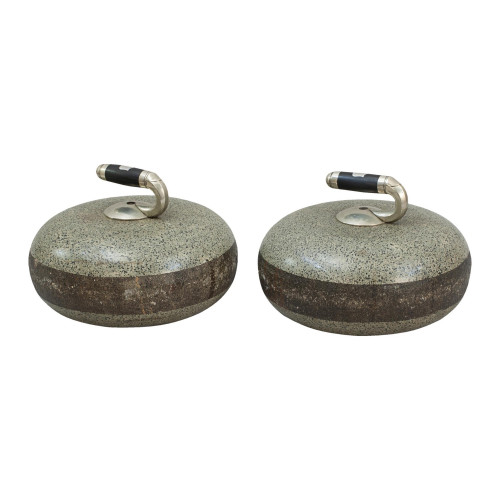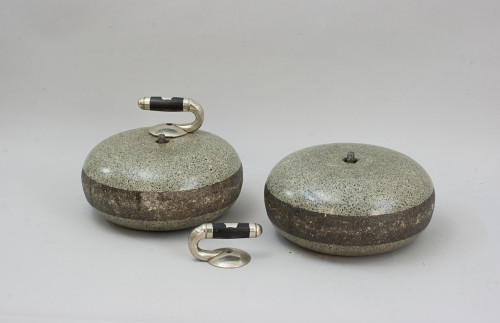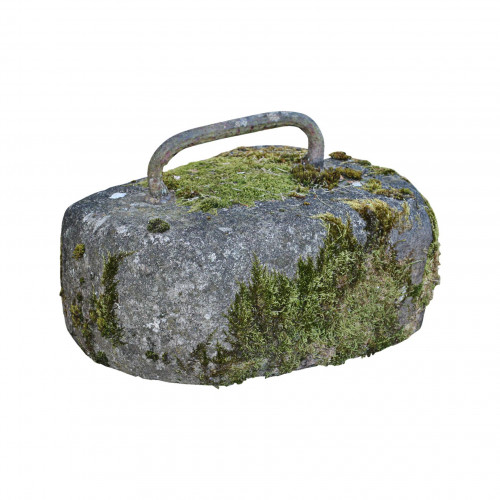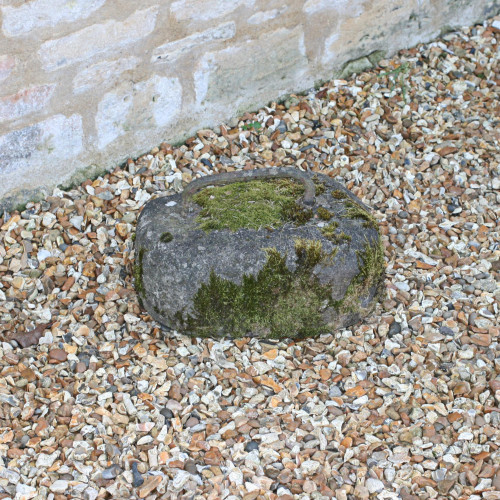- Home
- Alpine, Wintersport & Mountaineering
- General
- Rare Wooden Curling 'Stones'.
Rare Wooden Curling 'Stones'.
Rare Wooden Curling 'Stones'.
25691
19th Century Wooden Curling 'Stones'.
A fine and rare pair of wooden curling stones. The 'stones' are made of turned hard wood that has then been painted to look like the traditional grey granite stones, they are then finished having one-piece cast iron goose-neck handles that are also painted (to look like brass) with wooden grips. The base has a metal ring to help the 'stone' glide on the ice.
It is widely thought that these wooden 'stones' were taken by Scottish immigrants to North America, Canada in particular. Granite stones from Scotland were expensive or unavailable and wood was a very good alternative being readily available, inexpensive, easily worked and could easily be replaced. Wooden curling stones were common place in North America until the late 19th century when stone "stones" were then the preferred material.
The exact origins of curling are unclear but it is known to have a long history in Scotland, and it was through Scottish immigrants that the game of curling spread to other parts of the world. Early curling was an out door sport that was played on frozen lochs and ponds. Because of the unpredictable weather artificial curling rinks were being made to make a little frost go a long way. Concrete rinks were flooded with small amounts of water so they would freeze solid after a night of frost, thus having a rink to play on when the frozen lochs or ponds were unsafe. The first Curling Clubs were formed in Scotland as were the first rules to standardize curling and its equipment. The Grand Caledonian Curling Club was founded in Edinburgh in 1838, they formally adopted these new rules and became the sport's governing body. They heavily supported the use of round granite stones and rather than eight players each throwing a single stone it changed to a team of four players using two matched stones each. Four years later, in 1843, Her Majesty Queen Victoria so fascinated by the game demonstrated on the polished floor of the ballroom of Scone Palace near Perth she granted the Club the title of Royal Caledonian Curling Club. Curling was firmly established in Canada by the Scots with The Royal Montreal Curling Club being established in 1807, the oldest sports club still active in North America.
Dimensions:
1850-1899
Circa 1880
Scotland
very good
Thank you for your enquiry.
We will get back to you soon.
Please create wishlist to add this item to
RELATED ITEMS





























